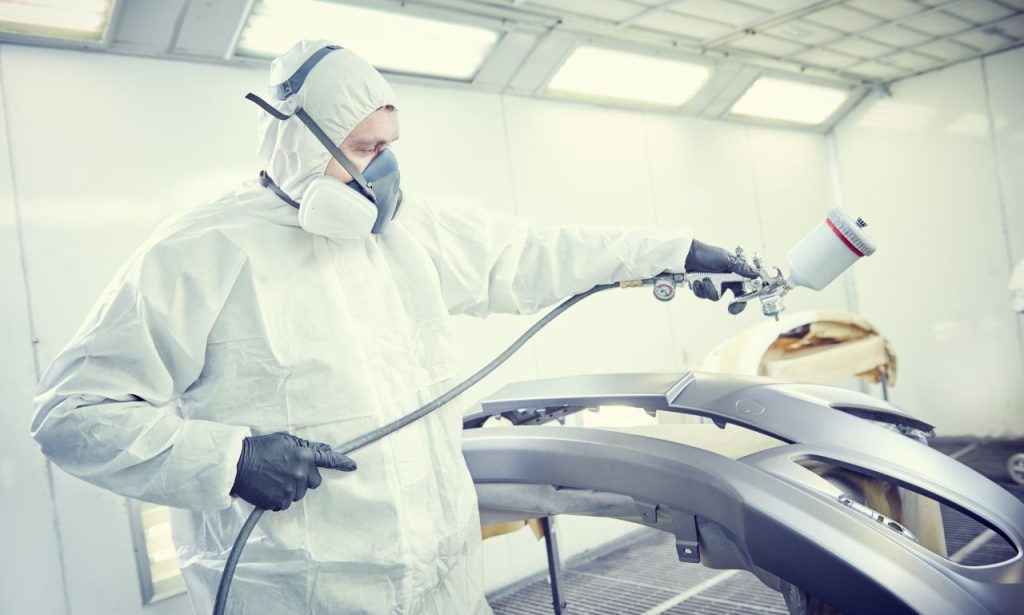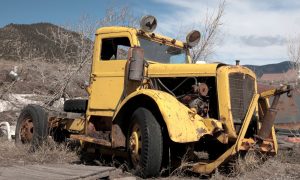Restoring a salvage car into a gleaming classic is no small feat. In this article, we’ll walk through the essentials, from crafting the perfect workspace to selecting hand tools, power tools, bodywork gear, paint equipment, and everything in between. You’ll learn how to tackle rust, overhaul an engine, revive electrical systems, and refresh interiors—all while keeping your tools organized and your budget on track. Whether you’re a seasoned restorer or just getting started, these insights will help you build confidence and control in every phase of your project.
The Ideal Workspace Setup
Creating a functional workspace is the foundation of any successful restoration. Start by selecting a well-ventilated garage or workshop with at least 200 square feet of floor space. Position your car centrally so you can move around freely. Near the entry, install a sturdy workbench—ideally eight feet long and two feet deep—with a thick maple or steel top that resists gouges and solvent spills. Above it, mount pegboard panels and adjustable shelving to keep frequently used tools within arm’s reach.
Good lighting can make or break precision tasks. Invest in a combination of overhead LED panels for general illumination and adjustable gooseneck lamps for close-up work. Temperature control matters, too. A small infrared heater will keep you comfortable in winter, while a retractable exhaust fan helps clear paint fumes in summer. Finally, designate zones: one for disassembly, one for metalwork, one for painting, and another for engine and electrical work. By establishing clear boundaries, you can minimize clutter and streamline your workflow.
Hand Tools Every Restorer Needs

Even in the age of cordless everything, quality hand tools remain indispensable. Begin with a complete metric and SAE socket set (from 4 mm to 24 mm and 3/16″ to 1″). Look for sockets stamped from chrome-moly steel to ensure durability under high torque. A sturdy ratchet with a quick-release button and a full range of extension bars (3-inch, 6-inch, 10-inch) will tackle tight engine compartments with ease. Combine these with a set of impact-rated wrenches for stubborn bolts.
Precision screwdrivers—both flathead and Phillips—are essential but don’t overlook specialty bits for Torx, hex, and spline screws, which are often found in modern vehicles. A magnetic bit holder saves time by keeping bits anchored in tight spaces. For prying and alignment, a set of pry bars (8-inch, 12-inch, 24-inch) made from heat-treated alloy steel will prevent bending. Slip-joint and locking pliers (Channel-Lock and Vise-Grip brands) help you clamp and twist parts without chewing up bolt heads.
Hand tools also include hammers and mallets. A cross-peen hammer (16 ounces) is perfect for shaping metal, while a rubber mallet (12 ounces) won’t damage surfaces when repositioning panels. Finally, don’t skimp on measuring tools—a quality tape measure, calipers, and a dial indicator will ensure you meet the original specifications when reassembling intricate parts.
Power Tools for Precision Work
Power tools shave hours off repetitive tasks, but quality counts. A three-amp corded drill with adjustable speed control is your workhorse for drilling, wire-wheel rust removal, and mixing paint. Pair it with a set of high-speed steel (HSS) twist bits and cobalt bits for stainless-steel fasteners. If portability is a concern, a 20-volt brushless cordless drill/driver from a reputable brand like DeWalt or Makita offers the benefits of torque, long battery life, and reliability.
Angle grinders are indispensable for cutting, grinding, and blending metal. Opt for a 4½-inch grinder with a two-stage safety switch and a side handle that adjusts to multiple positions. Use cutting discs, grinding wheels, and flap discs to remove rust, cut exhaust pipes, or smooth welds. For sanding, a random-orbit sander (5-inch pad) powered by a 2.3-amp motor will minimize swirl marks when prepping panels for paint.
An air compressor paired with pneumatic tools takes your shop to the next level. A 20-gallon tank with a 5-horsepower motor delivers enough capacity to run an impact wrench (½-inch drive), air ratchet, and high-speed die grinder. Invest in a quality regulator and moisture trap to protect your tools. Without clean, dry air, pneumatic tools wear out quickly.
Bodywork Tools for Restoring Form
Sheet-metal work demands patience and the right kit. A basic English wheel lets you smooth larger panels—ideal for recreating factory curves. If the budget is tight, a set of dollies (heel, toe, and round) paired with a body hammer can accomplish much of the same work by hand. Lay out a hacksaw blade in a handheld frame for cutting out rusted sections, then weld in fresh metal patches.
Panel flanging tools (also known as plasma-cut panel flangers) create lips for welding in new patches without marring the edges. A slip roller helps you roll up replacement quarter-panels when tackling fenders or door skins. To ensure factory fitment, keep a profile gauge handy—it picks up curves from the original panels, so the new metal follows the same contour.
Filler and shaping require body files and sanding boards. A mill file (8-inch) removes high spots quickly, while a filet file (12-inch) smooths filler transitions. Rigid sanding boards (with 80-grit and 180-grit paper) keep body filler flat before you move to finer grits. Use personal protective equipment, such as respirators, coveralls, and gloves, to protect against metal dust and body filler fumes.
Paint and Finishing Equipment
Achieving a flawless finish begins with high-quality paint guns and proper technique. A conventional HVLP (high-volume, low-pressure) spray gun offers fine atomization and less overspray. When tackling large panels, a 1.8 mm fluid tip is best suited for primers and sealers, while a 1.3 mm tip is ideal for basecoat and clearcoat applications. Pressure gauges on your regulator should read 10–12 psi at the gun for consistent coverage.
Paint mixing is critical. A digital scale accurate to 0.1 grams ensures you follow the manufacturer’s mixing ratios precisely. Store paint in amber jars to reduce UV degradation. For masking, automotive-grade masking tape and stretchable masking film create razor-sharp edges, saving time when transitioning between panels.
After painting, a dual-action polisher (random orbit) equipped with foam pads removes orange peel and minor imperfections. Start with a cutting pad and a compound, then switch to a finishing pad with a swirl-removal polish. Always work with wet pads, and wash them frequently to avoid embedding paint solids that could scratch your finish.
Rust Removal and Prevention Tools
Battling rust is a daily chore in salvage restoration. A soda-blasting cabinet (12 cubic-foot capacity) allows you to strip parts with baking soda, which is gentle enough to preserve metal but tough on corrosion. For larger parts, a portable media blaster with coal slag or glass beads will reach nooks that wire wheels can’t.
Chemical rust removers—phosphoric acid–based gels—dissolve scale and leave a protective iron phosphate coating. Apply with a brush, let sit according to instructions, then neutralize and rinse thoroughly. After blasting or chemical treatment, apply a rust-inhibiting primer within 24 hours to prevent flash rust from forming.
Weld-through primers enable you to join metal without stripping primer from the weld areas. Look for epoxy zinc formulations that bond to clean steel. When doing seam sealing, use a professional seam sealer gun—it dispenses a bead that you can smooth into complex joints with a spatula.
Specialized Tools for Engine Overhaul
Rebuilding an engine requires precision instruments. A torque wrench (3/8-inch drive, 5–50 ft-lb range, and 1/2-inch drive, 20–150 ft-lb range) with ±4% accuracy ensures head bolts and main caps are torqued correctly. A dial bore gauge (standard and metric) checks cylinder wear, while a micrometer set (0–1 inch and 1–2 inch ranges) measures piston diameter to confirm correct piston-to-wall clearance.
A valve spring compressor—universal style for most V-blocks—lets you replace seals and springs without removing the head. For camshaft installation, use a camshaft alignment tool that is specifically designed for your engine family. Many enthusiasts share 3D-printed versions of these on forums, which can save you a few hundred dollars versus OEM tools.
Don’t overlook a compression tester and leak-down tester. A leak-down tester, in particular, reveals worn rings and valve issues by measuring the amount of air that escapes when pressure is applied. Keep a magnetic parts tray and an engine hoist with a rated capacity of at least 2 tons nearby to move heavy assemblies safely.
Electrical System Restoration Essentials
Wiring is often the Achilles’ heel of a salvage project. A digital multimeter with True RMS capability helps you diagnose shorts, open circuits, and voltage drops. Alongside it, a wire crimper that accepts insulated and non-insulated terminals ensures reliable connections.
Heat-shrink tubing kits and an industrial heat gun deliver sealed joints that resist moisture. When replacing wiring harnesses, label every connector with colored tape and a marker to simplify reassembly. If the original harnesses are beyond repair, aftermarket universal harness kits can be adapted by using solder joints protected with liquid electrical tape.
Battery chargers with desulfation modes can revive batteries that are on the verge of being discharged. Invest in a jump-starter pack with a built-in air compressor—you’ll use it far more than you expect. For lighting repairs, LED upgrade kits not only improve visibility but also reduce current draw, which eases the strain on restored charging systems.
Interior and Upholstery Restoration Tools
Renewing an interior demands both woodworking and sewing skills. A staple gun and upholstery tack hammer help you secure the new fabric on seat frames and door panels. Use a pneumatic upholstery stapler to speed up repetitive stapling, but keep manual tacking for tight corners to avoid ripped vinyl or leather.
Seat-cover installation tools—such as hog-ring pliers and hog rings—ensure a factory-tight fit. When repairing dashboards, heat-forming film patches over cracks with a small heat gun can blend repairs seamlessly. Plastic welding kits, complete with speed controls and plastic filler rods, help you fix brittle interior trim pieces.
For carpets and headliners, an adhesive gun with automotive-grade contact cement creates a strong bond without messy drips. A roller tool ensures even pressure and prevents the formation of air pockets. Finally, a rotary tool with felt-backed buffing wheels polishes metal interior accents to a showroom shine.
Keeping Your Tools and Workspace Organized
An organized shop isn’t just tidy—it boosts safety and productivity. Label every drawer and bin—color-code electrical and mechanical tools so you can spot what you need at a glance. Mobile tool carts enable you to move the essentials to your work area, eliminating the need to trek back and forth.
Use magnetic tool holders for wrenches and sockets on the wall near your workbench. A small parts organizer with clear drawers keeps nuts, bolts, and washers sorted by size and grade. At the end of each day, take five minutes to put tools back in their home—this habit prevents lost parts and reduces frustration during late-night wrench sessions.
Expert Tips on Buying Quality Tools

Buying cheap often proves to be more expensive in the long run. Look for lifetime warranties—brands that stand behind their tools with no-questions warranties will save you thousands over decades. Read real-world user reviews in enthusiast forums; they’ll highlight flaws that marketing materials won’t mention.
Attend a local car club’s swap meet or tool expo. You’ll find gently used professional gear at a fraction of the retail price. When buying new, keep an eye out for manufacturer rebates and holiday sales—Black Friday and end-of-quarter promotions can unlock significant discounts. Finally, invest in modular storage systems, such as Stack-On or Husky tool chests, that grow with your collection and protect your tools from moisture and dust.
Conclusion
Restoring a salvage car is a blend of art and science. Equipping yourself with the right tools—from hand wrenches and power drills to spray guns and upholstery staplers—makes each step smoother and more precise. By setting up an efficient workspace, organizing your gear, and choosing quality brands, you’ll reduce headaches, save time, and take pride in every transformed panel. Now that you have the roadmap, it’s time to roll up your sleeves, pick up your tools, and bring that salvage car back to life.
FAQs
A beginner should start with a metric and SAE socket set, a ratchet with extension bars, precision screwdrivers, and pliers. These basics handle most nuts, bolts, and fasteners you’ll encounter during disassembly and preliminary repairs.
While not strictly mandatory for fundamental work, an air compressor paired with pneumatic tools—such as an impact wrench, die grinder and spray gun—dramatically speeds up tasks and improves finish quality, especially for painting and bodywork.
After every 20–30 hours of use, clean the vents and apply a few drops of the manufacturer-recommended oil to the moving parts. Inspect brushes in cordless motors, and always drain moisture traps on compressors daily to prevent rust and damage to the tool.
Home-grade tools can get you started, but they often wear out faster under high torque demands. If you plan to undertake multiple restoration projects or experience heavy use, investing in professional-grade tools with solid warranties will save you money and frustration over time.
Store paint and solvents in a cool, dry area away from direct sunlight. Use sealed cabinets with spill trays. Keep containers tightly closed and clearly labeled. Proper storage extends shelf life and prevents hazardous vapors from building up in your workspace.




